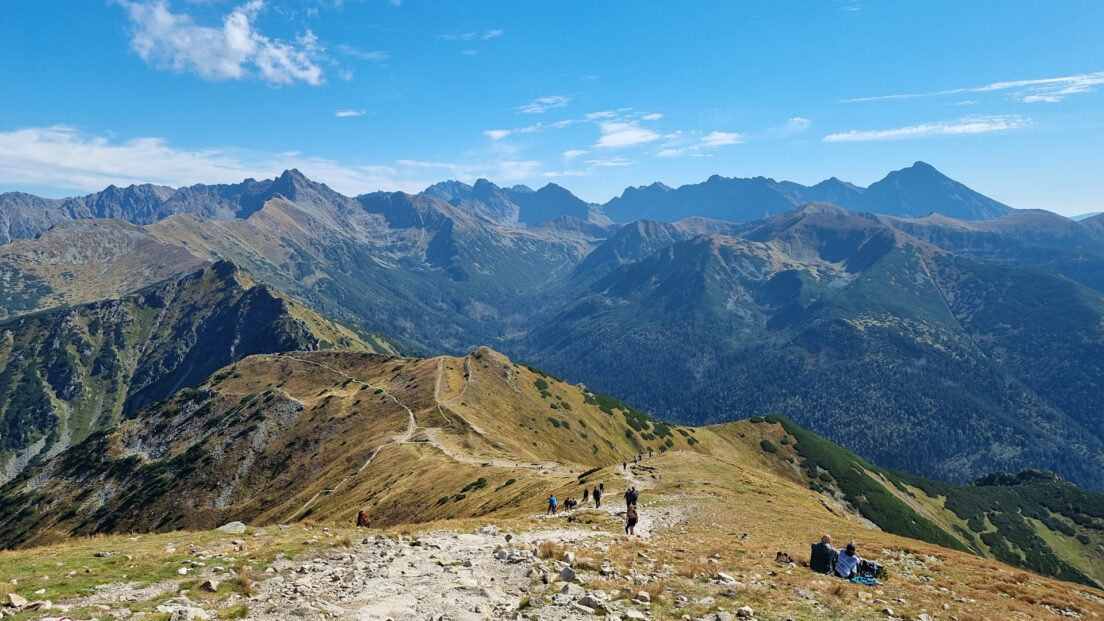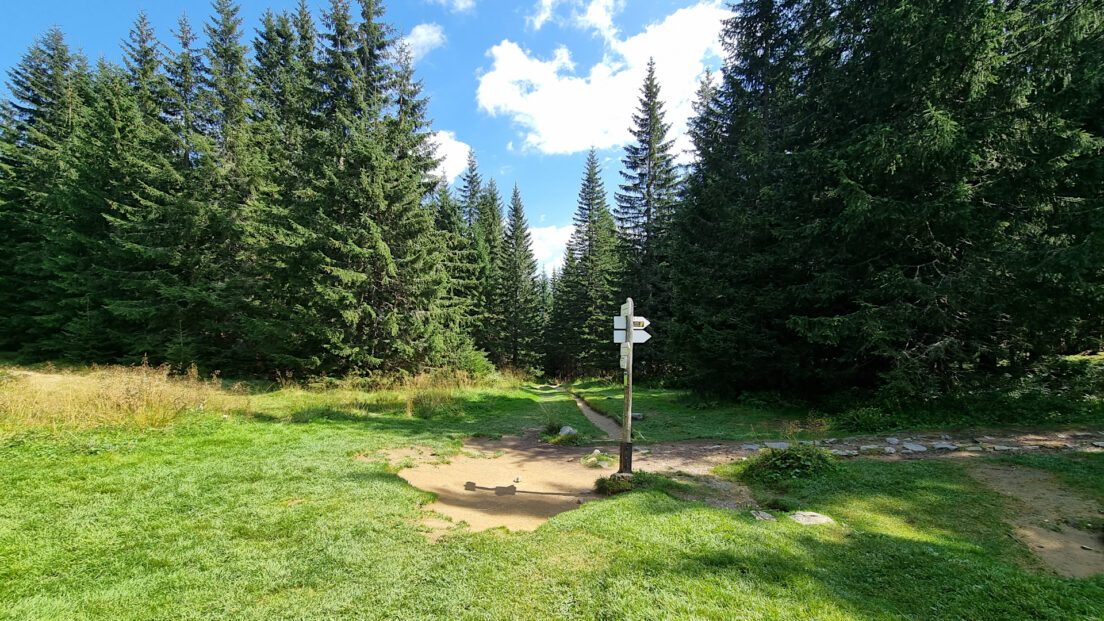The second part of the scenic hike in the Western Tatra Mountains. From Kopa Kondracka through Suchy Wierch Kondracki we descend to Kuźnice. From the peak of Kopa there is a magnificent view of the Western Tatras, the High Tatras, the Sącz Beskid Mountains, the Pieniny Mountains, the...
Region: Western Tatra Mountains
Western Tatra Mountains – one of the three mountain ranges of the Tatra Chain, which is the western part of the Tatra Mountains, belonging to the Carpathians, located on the Polish-Slovak border. The mountains border the High Tatras in the east, the Podtatra Valley in the south, the Choč Mountains in the west and the Podtatra Trench in the north. The main ridge is 37 km long and the mountain range includes 31 two-thousanders. The Western Tatras have an area of approximately 400 km², which is almost half of the entire area of the Tatra Mountains. 25% of the area of the Western Tatras is located in Poland, the rest in Slovakia. They are the second highest mountain range in both Poland and Slovakia, the highest peak is Bystra with a height of 2,248 meters. In the Polish part of the Western Tatras, the highest peak is Starorobociański Wierch (2,176 m).
The crystalline core of the main ridge of the Western Tatras consists of deep-sea igneous rocks (granites) and metamorphic rocks (gneiss and crystalline schists, amphibolites, migmatites, mylonites). The northern slopes of the Western Tatras, like the High Tatras and the Belianske Tatras, are made of sedimentary rocks. The presence of a large amount of rocks here that are more susceptible to erosion than the rocks of the High Tatras is the reason why the peaks of the Western Tatras are lower. Flowing waters – streams – had the greatest impact on shaping the relief of the land. Mountain glaciers added a slight polish to the relief of the Western Tatras. The lower height of the peaks meant that they were not glaciated so strongly during the Ice Age – the glaciers formed here were smaller, the glacial cirques were shallower and not so severe. In general, the influence of glaciers on the relief of the mountains was smaller here than in the High Tatras. Due to the presence of limestone rocks – limestones and dolomites – karst phenomena are well developed here, resulting in numerous caves and karst valleys, karst grooves and sinkholes. The longest and deepest cave in Poland is located here – Jaskinia Wielka Śnieżna.
The climate does not differ from the climate in other parts of the Tatra Mountains. The warmest month is July, while the coldest is February. On the peaks, winter lasts on average from mid-October to mid-May. A characteristic feature of the weather is its high variability, which is difficult to predict. The weather can change radically within a few hours; in summer or early autumn, a significant drop in temperature and the occurrence of strong storms, snowstorms or hail are not uncommon. A characteristic type of wind occurring in the Tatra Mountains is mountain wind.
Due to the diverse geological substrate, the vegetation of the Western Tatras is richer and more diverse in species than in the High Tatras. This is due to the large amount of limestone rocks with an interesting flora of lime-loving plants. Many plant species are found only here, and many others that are rare in the High Tatras are common here.
Hikes in the Western Tatra Mountains:
A scenic hike on a sunny day in the Western Tatra Mountains. From Kuźnice we ascend Kopa Kondracka through Kondracka Pass. Initially, the blue trail leads along a wide road through the Bystra Valley. We pass the vast Kalatówki Glade from below. Behind the glade, we enter the Kondratowa...
Summer hike in the Western Tatra Mountains. We start at Siwa Glade at the mouth of the Chochołowska Valley. We hike up the Siwa Woda Stream, which at the mouth of the Koryciańska Siklawa Stream changes into Chochołowski Stream. A little further we pass through the vast and scenic...




